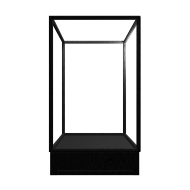This is the text of the first research proposal I submitted. The jury deemed it interesting, but rightfully remarked it was more a collection of ideas than a research proposal.
I’m publishing it here, since it encompasses some tracks, parallel to the final research proposal.
Outline of the intended doctoral research project by Alexandra Crouwers
Scholarship for a PhD in the Arts in Animation at LUCA School of Arts/KU Leuven
The Garden of Forking Paths (1)
An associative, nonlinear hyper-interpretation of visual history, connecting the interfaces of Acheulean (2) hand axes to the computer mouse through the use of time-travelling knight-moves.
Goal
By exploring the medium of the (digitally animated nonlinear, and possibly multiscreen) video essay – using text, sound, and image – a semi-fictional narrative is constructed that aims to bring the artist, contemporary art, and the viewer closer to the origins of image-making in human evolution.
By-products
- A series of newspaper format publications, combining fictional texts with essayistic texts, diagrams, new and archival images.
- Other printed matter, such as leporellos and posters.
- A dedicated hyperlinked, growing website: a web-diagram.
Philosophy
Convergent and branching lines of human (visual) development clearly show every culture is based into the same roots: imagination.
Questions & issues
How do I, as an artist working mainly with digital means, get as close as possible to those roots? Also: working in the fields of ‘deep time’ and ‘big history’, relying heavily on physical remnants, how do I prevent the destruction or disappearance of my digital/video work in the deeper scope of time? Do I need to have some sort of ‘offline’ or ‘off the grid’ version of my work? What would that look like? Can (digital) animation be translated into a future archaeological find?
POV
The perspective of the ‘mad scientist’ or the concept of a demiurg will provide the artistic freedom needed, as opposed to a scholarly scientific research. This ‘narrator’ is obviously a female mad scientist/demiurge (3).
Crossover between disciplines
The research makes use of the fields of archaeology, evolutionary biology, neurology and psychology, cultural anthropology, and art history, including architecture and cinema, and literature.
My research proposal departs from the assumption prehistoric painted caves are multimedia installations, the cave providing a natural architecture. The paintings are not merely paintings, but an integral part of the space, its lighting, and its acoustics (4). Certain caves were scripted (5), ritual spaces, designed as portals, and perhaps as a representation of mental space. The caves are models for later Neolithic architecture: dolmen often mimicking caves, temples, churches, cathedrals, and even, in some ways, the controlled environment of the modernist contemporary art space.
In this respect the human ability to produce vast amounts of fiction, using image to materialize these dreams or hallucinations (6), is an astounding quality in itself.
Narrative & fiction in contemporary art: a short critique
Sometimes it seems that functional modernism has become a dogma in contemporary art. Especially the theoretical discourse seems to be focussed on the last 100 years, disregarding the history of often fiction-based and narrative visual culture that our niche of contemporary art is undeniably part of. It tends to dismiss narrative to be ‘illustrative’.
At the same time vast amounts of text are produced to provide context for art works or exhibition projects. To me, this is absurd: it’s a form of reversed narrative, story imposed upon image as opposed to image arising from story. The research might be interpreted as a counterbalance, a ‘protest’, a reminder.
Conclusion
By this multidisciplinary and controlled chaotic approach, using science next to fiction, and showing how we – as artists, but also as human beings – are deeply connected to history through art (or in a wider sense: image), I want to evoke the notion of being part of something greater, even though this sensation might last only as long as the video work or exhibition does. Art functions as a portal to other worlds and otherworldly ideas. I’m proposing to project this function in a constellation of works.
Presentation
Although exhibitions or projects in contemporary art spaces won’t be excluded – especially if the exhibition space can be transformed according to the research -, the ultimate goal is to present the works in a historical or art historical context.
Footnotes
1) Working title, after the eponymous short story by Jorge Luis Borges, 1941. This rather abstract short story proposes both the idea of hypertext (a text link, such as this one, and forked, non-linear storylines, ‘hypertext fiction’, or games), and a multiverse theory, in which multiple narratives, lives, or universes co-exist simultaneously.
2) A pretty good case can be made for Achuelean hand axes to have been used not only as tools but also as objects with symbolic meaning, in which case they’re a beautiful merge of technology and ‘art’. See also: First Sculpture: Handaxe to Figure Stone, exhibition at Nasher Sculpture Center, Texas.
3) The visual artist as a demiurg: a ‘world-builder’, or ‘builder of ideas’, and the demiurg as a ‘mad scientist’.
4) David Lewis Williams & David Pearce, Inside the Neolithic Mind: Consciousness, Cosmos and the Realm of the Gods, Thames & Hudson, 2005 / David Lewis Williams, The Mind in the Cave: Consciousness and the Origins of Art. Thames & Hudson, 2002
5) Norman M. Klein, The Vatican to Vegas: The History of Special Effects. New Press, 2004
6) Steven Mithen, The prehistory of the mind: a search for the origins of art, religion, and science. Thames and Hudson, 1996

